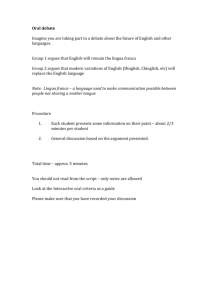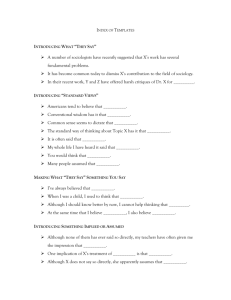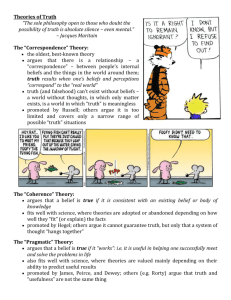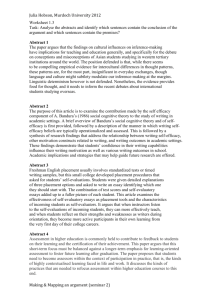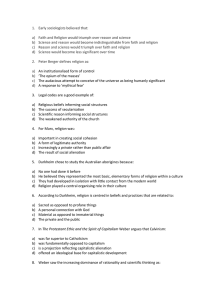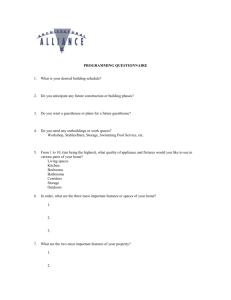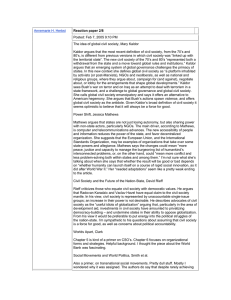Architectural Theory Midterm Exam
advertisement
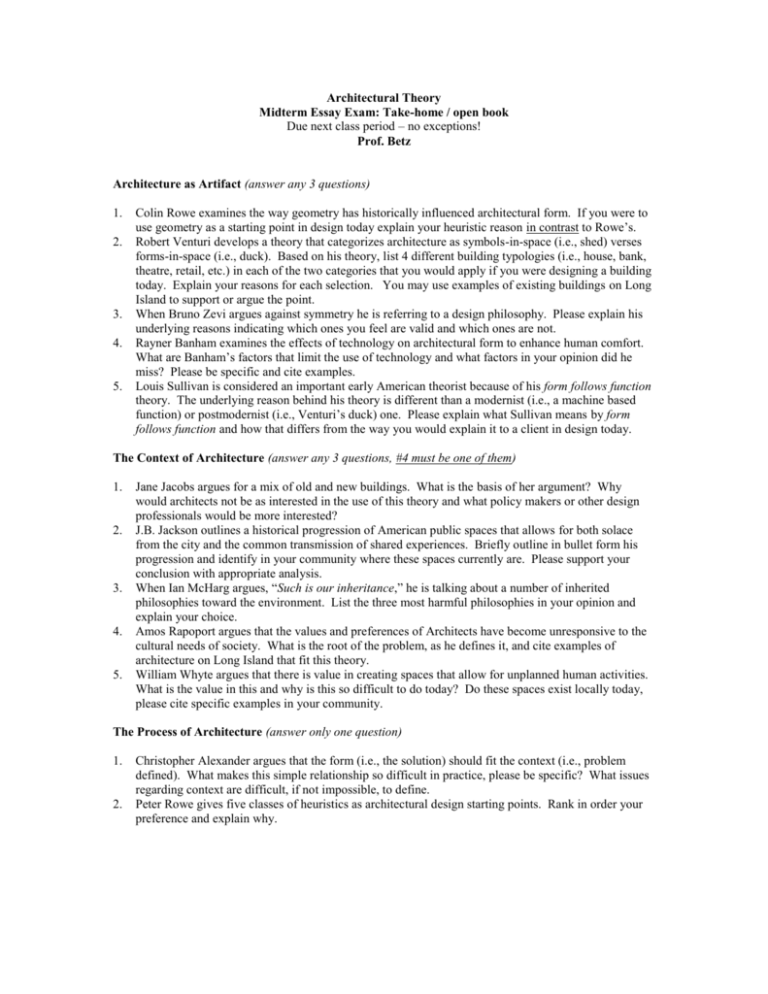
Architectural Theory Midterm Essay Exam: Take-home / open book Due next class period – no exceptions! Prof. Betz Architecture as Artifact (answer any 3 questions) 1. 2. 3. 4. 5. Colin Rowe examines the way geometry has historically influenced architectural form. If you were to use geometry as a starting point in design today explain your heuristic reason in contrast to Rowe’s. Robert Venturi develops a theory that categorizes architecture as symbols-in-space (i.e., shed) verses forms-in-space (i.e., duck). Based on his theory, list 4 different building typologies (i.e., house, bank, theatre, retail, etc.) in each of the two categories that you would apply if you were designing a building today. Explain your reasons for each selection. You may use examples of existing buildings on Long Island to support or argue the point. When Bruno Zevi argues against symmetry he is referring to a design philosophy. Please explain his underlying reasons indicating which ones you feel are valid and which ones are not. Rayner Banham examines the effects of technology on architectural form to enhance human comfort. What are Banham’s factors that limit the use of technology and what factors in your opinion did he miss? Please be specific and cite examples. Louis Sullivan is considered an important early American theorist because of his form follows function theory. The underlying reason behind his theory is different than a modernist (i.e., a machine based function) or postmodernist (i.e., Venturi’s duck) one. Please explain what Sullivan means by form follows function and how that differs from the way you would explain it to a client in design today. The Context of Architecture (answer any 3 questions, #4 must be one of them) 1. 2. 3. 4. 5. Jane Jacobs argues for a mix of old and new buildings. What is the basis of her argument? Why would architects not be as interested in the use of this theory and what policy makers or other design professionals would be more interested? J.B. Jackson outlines a historical progression of American public spaces that allows for both solace from the city and the common transmission of shared experiences. Briefly outline in bullet form his progression and identify in your community where these spaces currently are. Please support your conclusion with appropriate analysis. When Ian McHarg argues, “Such is our inheritance,” he is talking about a number of inherited philosophies toward the environment. List the three most harmful philosophies in your opinion and explain your choice. Amos Rapoport argues that the values and preferences of Architects have become unresponsive to the cultural needs of society. What is the root of the problem, as he defines it, and cite examples of architecture on Long Island that fit this theory. William Whyte argues that there is value in creating spaces that allow for unplanned human activities. What is the value in this and why is this so difficult to do today? Do these spaces exist locally today, please cite specific examples in your community. The Process of Architecture (answer only one question) 1. 2. Christopher Alexander argues that the form (i.e., the solution) should fit the context (i.e., problem defined). What makes this simple relationship so difficult in practice, please be specific? What issues regarding context are difficult, if not impossible, to define. Peter Rowe gives five classes of heuristics as architectural design starting points. Rank in order your preference and explain why.
